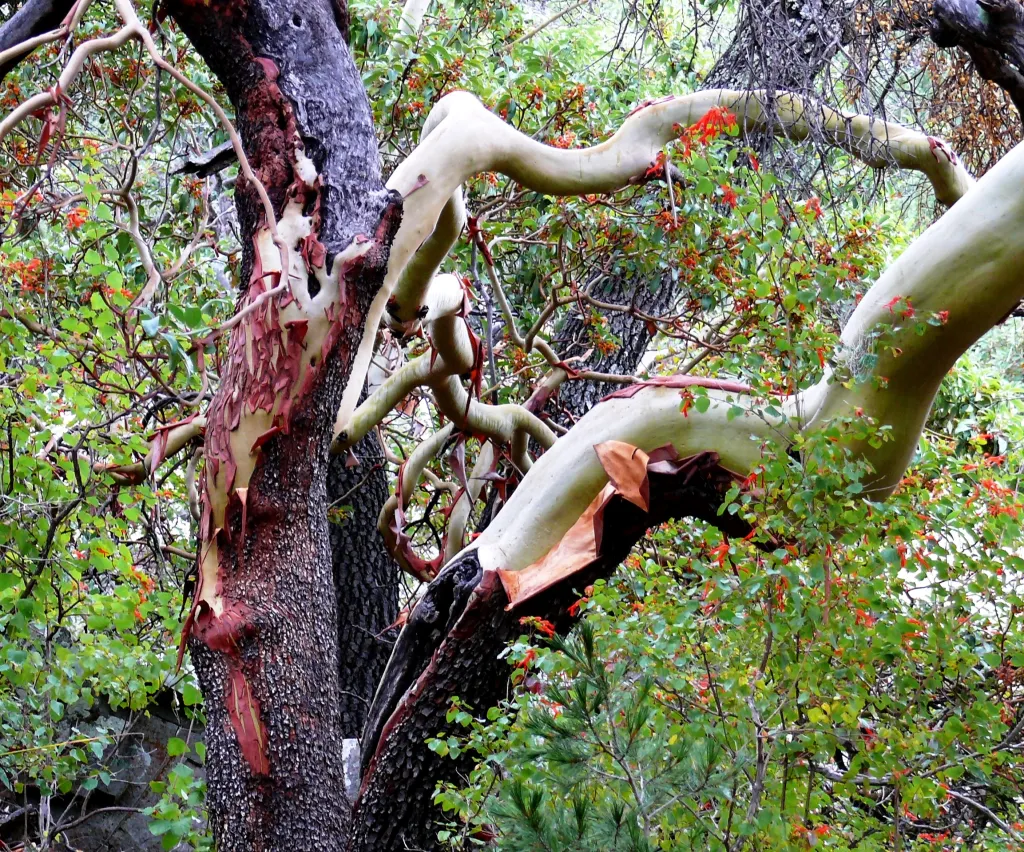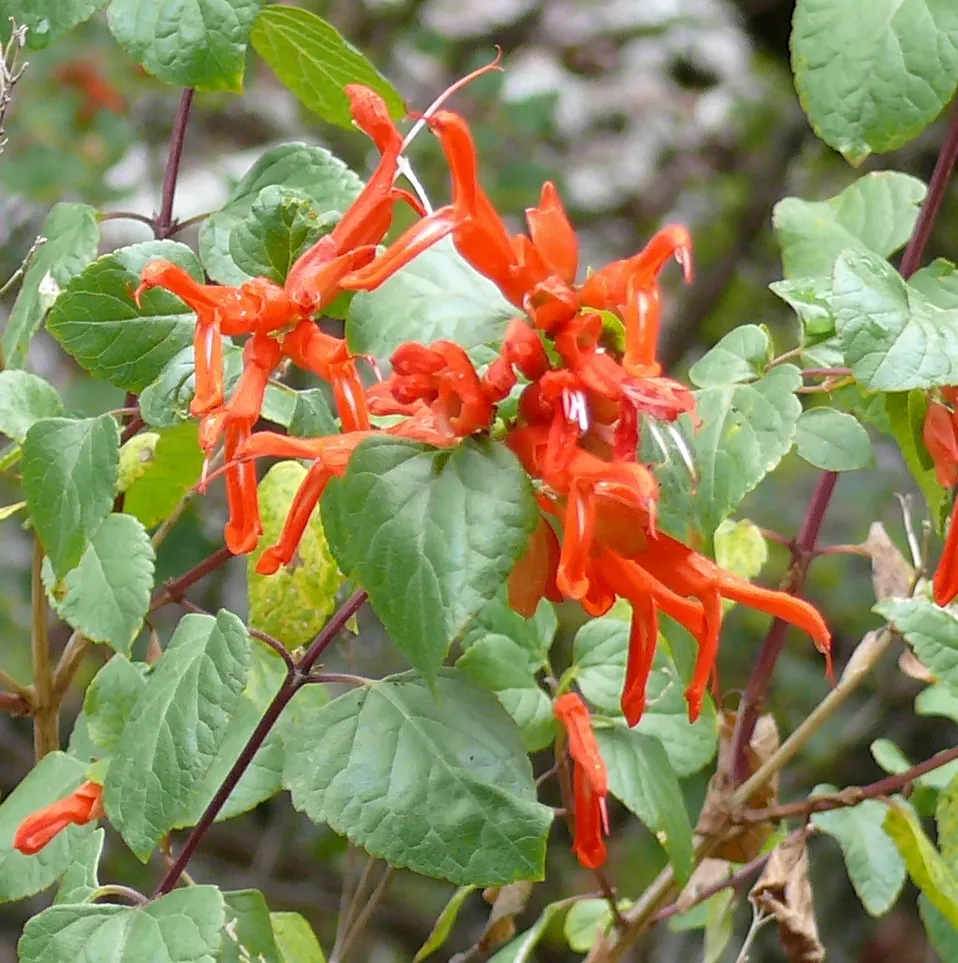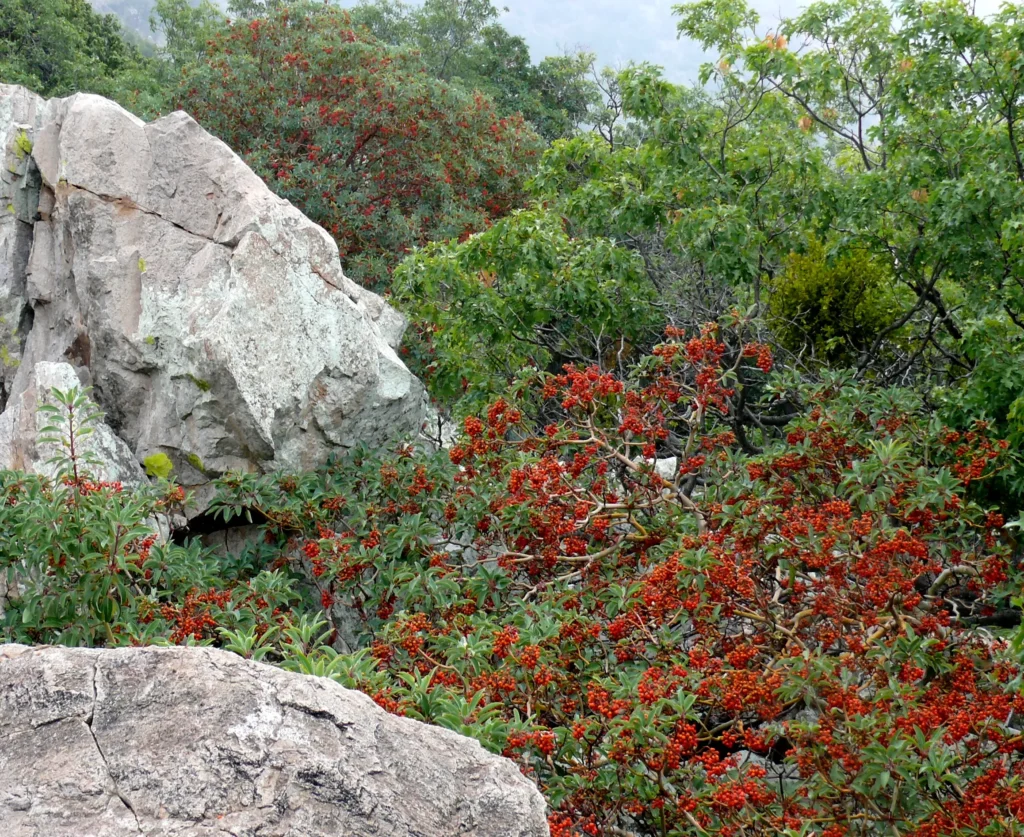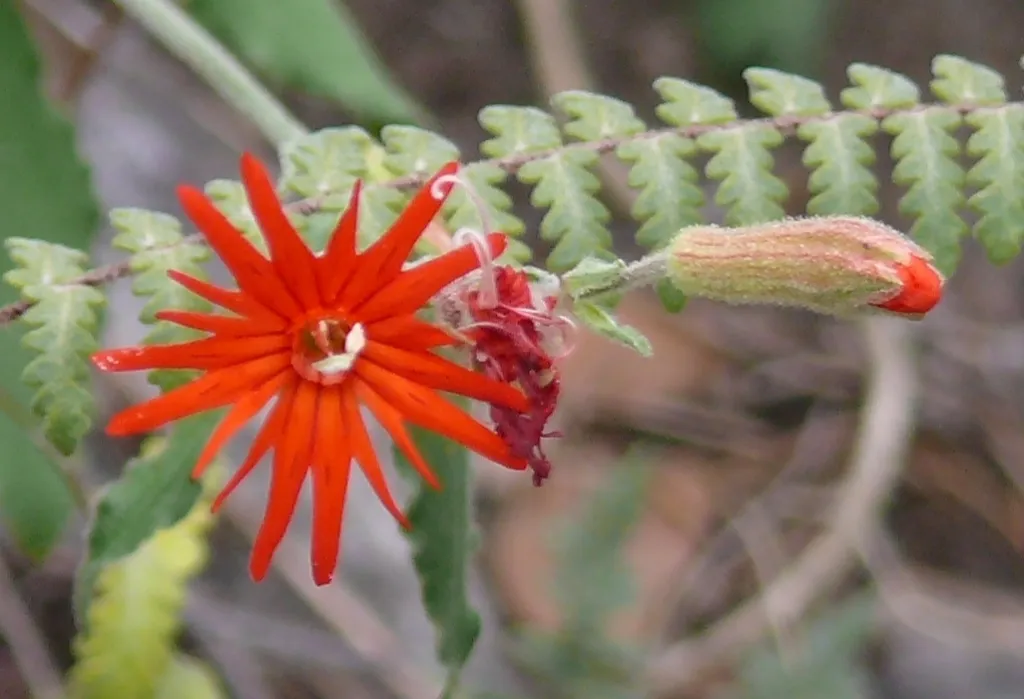Author: Bill Ward
September is our favorite time to go to Big Bend National Park, because the crowds are gone and the mountain wildflowers are in full bloom. This year was no exception. In fact, all of Big Bend Park was greener than we ever remember seeing it. Plenty of summer rain fell out there.

Up in the forests of the Chisos Mountains right now, my favorite Big Bend salvia, the mountain sage, is brightening up the understory. Its orangish-red flowers seem to glow in the subdued light of the mountain woods. This is the same “mountain sage” that has become so popular in the local nursery trade in the last several years. In the Chisos, this salvia looks especially good blooming among the red-brown trunks and limbs of the Texas madrone. This is such a complementary pairing of plants that I tried it in our yard. It works.
Many of the madrone trees in the Chisos are loaded with red fruit this fall. Birds were flying in to feast, and I would guess many small mammals visited those trees when we weren’t around.

Other red wildflowers blooming in the Chisos Mountains in early fall are scarlet bouvardia or trompetilla, skyrocket, a red penstemon, and the eye-catching mountain catchfly.
Yellow or golden flowers include abundant goldenrod, the last of the damianita blooms, globemallow, mountain mahogany, and several composites.
White blossoms are Wright thoroughwort, beebrush, old man’s beard, and two or three shrubs we couldn’t identify. Two other salvias, canyon sage and Arizona sage, have blue flowers.

There are many, many others, too. It is like springtime in those mountains, both with respect to flowers and temperature.
Down off the mountains and toward the Rio Grande, it is hotter with far less wildflowers. However, expanses of blooming cenizo bushes do cast a pretty purple haze over several patches of the landscape, at least for a few days.
While we were walking up a dry wash toward Burro Mesa Pour-off, I recognized a lot of shrubs and small trees which also are familiar to our part of the Hill Country. I thought to myself, “If these plants can survive in this desert, maybe they are the very Hill Country species we should be planting in our yards now, in preparation for the hotter and drier terrain the climatologists predict for our future.”

Growing along the low banks of that arroyo are several plants common to the eastern Edwards Plateau, such as evergreen sumac, aromatic sumac, little-leaf sumac, Texas persimmon, Mexican buckeye, golden ball lead-tree, and old man’s beard. Among the many plants less common to our part of the Hill Country are esperanza, guayacan, desert willow, spiny hackberry, ocotillo, candelilla, and various cactuses, agaves, sotols, and yuccas.
That’s a lot of very drought-tolerant plants that would make good shrubbery for Hill Country yards of the future. Maybe we don’t have to start thinking about Tucson vegetation just yet! Big Bend flora might get us by for a long time.
